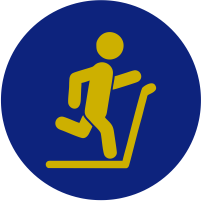Cervical Myelopathy
What Is Cervical Myelopathy?
Cervical myelopathy is a form of myelopathy that involves compression of the spinal cord in the cervical spine (neck). Your cervical spine contains seven vertebrae (C1 to C7), with six intervertebral discs and eight nerve roots. The spinal cord travels inside the vertebral column constructed from the front by vertebrae, cushioned by the intervertebral discs, and from the back by the facet joints and lamina. In the cervical spine, eight nerve roots branch out that primarily control the function of your shoulders, arms and hands.
What Causes Cervical Myelopathy?
Many people experience neck pain, but not all neck pain can be traced back to cervical myelopathy. Some patients with this condition don’t have any neck pain at all. The cause of your neck pain could be muscular rather than neurological. Talk to your doctor if you are suffering from persistent neck pain.
What Are The Symptoms of Cervical Myelopathy?
Cervical myelopathy produces two types of symptoms: the ones you may feel in the neck, and the ones appearing elsewhere in the body at or below the compressed area of the spinal cord.
The neck symptoms may include:
- Neck pain
- Stiffness
- Reduced range of motion
As the disease progresses, one may experience shooting pain that originates in the neck and travels down the spine.
Other cervical myelopathy symptoms may include:
- Weakness in the arms and hands
- Numbness or tingling in the arms and hands
- Clumsiness and poor coordination of the hands
- Difficulty handling small objects, like pens or coins
- Balance issues
What Are The Treatment Options For Cervical Myelopathy?
There are some nonsurgical options for relieving cervical myelopathy symptoms, including physical therapy and a cervical collar brace. However, to eliminate the compression of the spinal cord and prevent worsening of the condition, surgery is often necessary.
There are a few surgical procedures your doctor may recommend for treating cervical myelopathy. Widening of the spinal canal (laminoplasty) can be a good motion-sparing option for some patients. Others may benefit from spine decompression surgery with spinal fusion, which is meant to stabilize the spine after herniated discs, bone spurs or ossified ligaments are fully or partially removed.
These surgeries can be performed from the back of the neck (posteriorly) or from the front of the neck (anteriorly). Your doctor will recommend a specific surgery approach based on your situation.
Our team is here for you
We offer the best, least invasive and least aggressive options to relieve your pain and symptoms so you can get back to the life you love. Atlantic Orthopaedic Specialists Spine and Scoliosis Care Center has convenient locations in Virginia Beach, Norfolk and Chesapeake.



